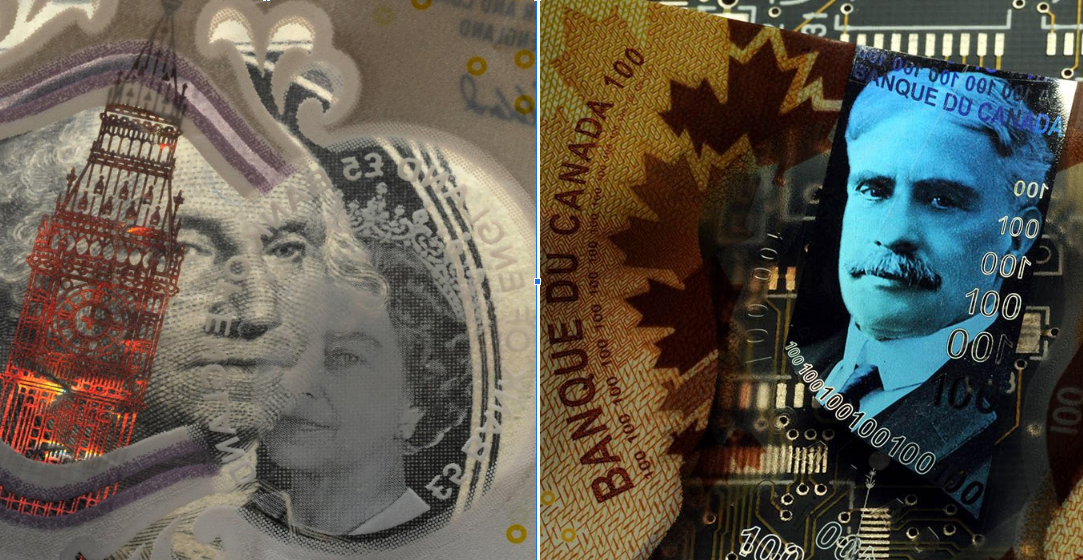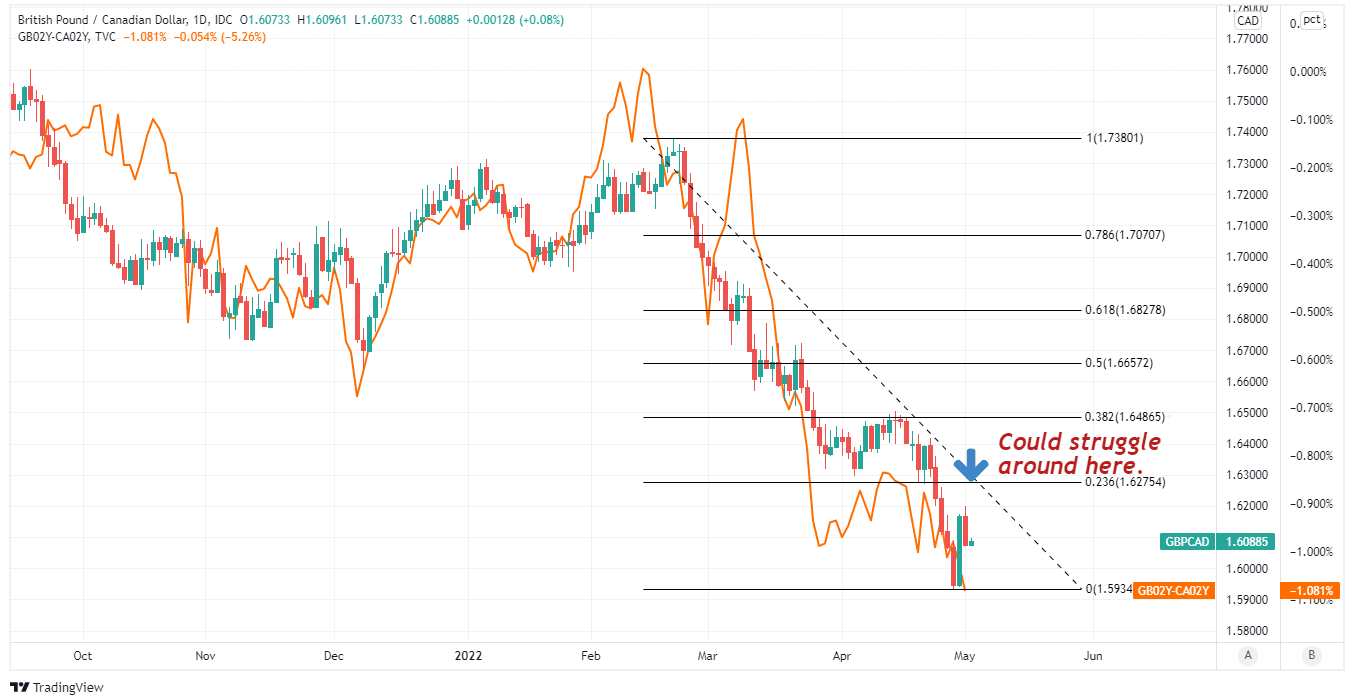GBP/CAD Week Ahead Forecast: Five Year Low Could be Seen
- Written by: James Skinner
-
- GBP/CAD could splutter on recovery near 1.63
- Could be at risk of slide to 2017 low this week
- BoE decision could suppress appetite for GBP
- Canada labour market headed for new record

Image © Pound Sterling Live
The Pound to Canadian Dollar exchange rate signed off on a hat-trick of weekly declines last Friday but may be at risk of further losses that would see it sliding to a new five year low this week in the wake of policy decisions from the Federal Reserve (Fed) and Bank of England (BoE).
Sterling already fell to its lowest against the Loonie since 2019 last week but would likely trade down into a 2017 trough in the latter half of this week if Wednesday’s Fed policy decision stalls the strengthening rally in the U.S. Dollar.
This would be especially likely if economic forecasts and the statement released alongside the BoE’s Thursday policy decision were to dampen market appetite for the Pound, which is a possibility, if not a likelihood this week.
However, and in the meantime the Pound to Canadian Dollar rate has risen off of last Friday’s lows and could attempt to extend its recovery further ahead of this week’s central bank decisions.
“Price action looks positive but the reversal on Friday did not definitively form a bullish reversal signal and GBP gains have faltered somewhat this morning already,” says Juan Manuel Herrera, a strategist at Scotiabank.
Above: Pound to Canadian Dollar exchange rate shown at daily intervals alongside spread - or gap - between 02-year UK and Canadian government bond yields, and with Fibonacci retracements of February decline indicating possible short-term areas of technical resistance for Sterling. Click image for closer inspection.
“Gains through 1.65+, which remains very distant, are needed to signal a sustained GBP rebound at this point, we believe. Minor GBP gains remain a sell from a technical point of view,” Herrera and colleagues also said on Monday.
Canada’s Dollar had proven more resilient than Sterling to the recently escalating surge in U.S. bond yields and their stimulatory effect on the U.S. Dollar, which may be because of Bank of Canada (BoC) monetary policy and the resultantly more elevated level of Canadian government bond yields.
It might also be likely to benefit more than Sterling this week if the Fed does elect to defer a widely anticipated start to the balance sheet reduction process known as quantitative tightening, or QT, given the risks for the Pound stemming from Thursday’s BoE decision.
“The year-to-date performance vs the USD is now negative for all G10 currencies and shows a strong correlation to the change in interest-rate (or yield) differentials,” says David Alexander Meier, an economist at Julius Baer.
The existing yield disadvantage has already weighed on GBP/CAD but would grow more burdensome this Thursday if the BoE’s policy decisions disappoint the market or if its economic forecasts force it to reconsider its assumptions about the outlook for Bank Rate. (Set your FX rate alert here).
Above: Pound to Canadian Dollar exchange rate shown at daily intervals alongside USD/CAD. Click image for closer inspection.
“The Ukraine conflict is making the BoE more cautious over the need for further rate hikes at a time when the Fed has been signalling that it plans to speed up the pace of rate hikes to combat upside inflation risks,” says Lee Hardman, a currency analyst at MUFG.
“The main upside risk in the week ahead is posed by a more hawkish than expected BoE policy update that puts larger 50bps hikes back on the table,” Hardman and colleagues said in a Friday research briefing.
The BoE is widely expected to lift Bank Rate to a post-financial crisis high of 1% on Thursday while many analysts and economists expect that it will also announce plans to begin actively selling government bonds acquired as part of its quantitative easing programme.
The possible rub for Sterling is that an announcement about government bond sales is far from assured and recent remarks from BoE Governor Andrew Bailey suggest the BoE’s latest economic forecasts could signal growing disagreement with market assumptions about the outlook for Bank Rate.
“We are now walking a very fine line between tackling inflation and the output effects of the real income shock and the risk that that could create a recession,” Governor Bailey told the Peterson Institute for International Economics while in Washington late last month.
All of this is why Thursday’s decision could ultimately have a dampening effect on market appetite for Sterling and potentially prompt fresh losses for the Pound to Canadian Dollar rate.
That being said, UK inflation rose to 7% in March while even after excluding increases in energy and food costs, the annual pace of price growth still leapt from 5.2% to 5.7% in what was likely a highly significant development for the BoE’s Monetary Policy Committee.
“In Canada, we’re at the stage in which good news can be bad news for financial markets, given that the greatest fear is now an inflationary overheating. So another strong employment gain could add to that concern,” says Avery Shenfeld, chief economist at CIBC Capital Markets.
“Friday’s data is likely to push the jobless rate still lower. Our research identified that there is still some elbow room for non-inflationary job gains in some provinces, so the inflation consequences depend on where we’re seeing the hiring,” Shenfeld also said in a Friday research briefing.
Thursday’s BoE decision is the highlight of the week ahead of Sterling although the Pound to Canadian Dollar exchange rate will also be reflective of the Loonie’s response to this Friday’s employment report for April.
Economists expect the data to show Canada’s unemployment rate falling to 5.2% and a new record low last month amid a robust domestic economy.


